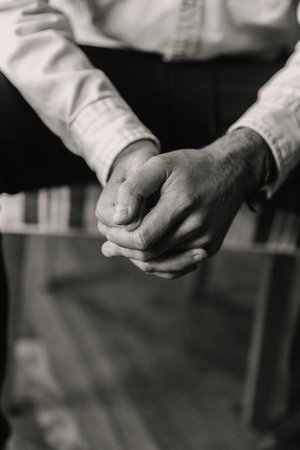In recent years, there has been a growing awareness and understanding of the diverse spectrum of gender identities beyond the traditional binary of male and female. Two identities that often spark curiosity and confusion are agender and non-binary. While both fall outside the conventional gender norms, they are distinct in their own ways. In this article, we will delve into the nuances of agender and non-binary identities, exploring their definitions, societal perceptions, challenges faced, and personal experiences. By shedding light on these identities, we aim to foster greater understanding and acceptance of the beautiful diversity within the gender spectrum.
Introduction: Understanding Gender Identity and Spectrum
Gender identity is a deeply personal aspect of an individual’s identity that goes beyond the physical attributes assigned at birth. It encompasses how one perceives themselves and how they relate to the concepts of masculinity, femininity, and gender as a whole. While society has historically recognized only two genders, male and female, it is crucial to acknowledge the existence of a gender spectrum, where individuals may identify with a range of gender identities.
Understanding gender identity requires us to challenge the traditional notions of gender and recognize that it is not solely determined by biological sex. Gender identity is a complex interplay of biology, culture, society, and personal experiences. It is important to approach this topic with an open mind and a willingness to learn and respect the diverse experiences and identities that exist.
By exploring the concepts of agender and non-binary, we can gain deeper insights into the intricacies of gender identity and the ways in which individuals navigate and express their authentic selves. Let us embark on this journey to better understand the differences between agender and non-binary identities and the significance they hold for those who identify with them.
What is Non-Binary?
Non-binary is a term used to describe individuals whose gender identity does not exclusively align with the categories of male or female. Non-binary individuals may identify as a combination of genders, as neither exclusively male nor female, or as completely outside the gender binary altogether. This identity challenges the societal construct of a binary gender system, recognizing and validating the existence of diverse gender identities.
Definition and Understanding Non-Binary
Non-binary individuals may identify with a range of gender identities, such as genderqueer, genderfluid, bigender, or agender. It is important to note that the term “non-binary” is an umbrella term that encompasses various gender identities beyond the binary.
Non-binary individuals may experience their gender identity as a fluid spectrum, where they may feel more connected to different genders at different times. Others may feel a consistent third-gender identity or a complete absence of gender. It is essential to respect and acknowledge each individual’s self-identified gender and their unique experience of non-binary identity.
Societal Perception and Acceptance of Non-Binary
Non-binary individuals often face challenges in societal acceptance and understanding. Many societies have historically adhered to a binary gender system, which can make it difficult for non-binary individuals to have their identities recognized and respected. Lack of awareness and understanding can lead to misgendering, discrimination, and invalidation of their identities.
However, there has been a growing awareness and acceptance of non-binary identities in recent years. Activism, education, and increased visibility of non-binary individuals have contributed to more inclusive conversations about gender. It is important to create spaces that respect and affirm non-binary individuals, promoting a society that recognizes and values the diversity of gender identities.
Non-Binary Pronouns and Gender Expression
Non-binary individuals may use a variety of pronouns to affirm their gender identity. Some may prefer gender-neutral pronouns such as “they/them,” “ze/hir,” or “xe/xem,” while others may opt for a combination of pronouns or choose pronouns traditionally associated with the gender they feel most connected to at that moment. It is crucial to use the pronouns preferred by each individual and to respect their chosen form of gender expression.
Gender expression for non-binary individuals can vary widely, as it is not bound by the traditional gender norms of appearance, clothing, or behavior. Non-binary individuals may choose to express themselves in ways that align with their authentic selves, regardless of societal expectations. This may involve blending elements of traditionally masculine and feminine presentations, creating a unique expression of their gender identity.
Understanding non-binary identities requires us to challenge preconceived notions of gender and embrace the richness and complexity of the gender spectrum. By recognizing and validating non-binary identities, we can work towards creating a more inclusive and accepting society for all individuals, regardless of their gender identity.
What is Agender?
Agender is a term used to describe individuals who do not identify with any gender or have a lack of gender identity. Agender individuals may experience a sense of neutrality or absence of gender, feeling disconnected from the traditional concepts of male or female. This identity challenges the societal expectation of identifying with a specific gender and highlights the unique experiences of those who identify as agender.
Definition and Understanding Agender
Agender individuals may describe themselves as genderless, gender-neutral, or without a gender. They may not identify with any gender identity, feeling detached from the societal construct of gender altogether. Agender individuals often experience a sense of freedom from the expectations and limitations associated with gender roles and stereotypes.
It is crucial to understand that agender is not the same as androgyny, which refers to a blend of both masculine and feminine attributes. Agender individuals may express themselves in a variety of ways, regardless of societal expectations of gender expression.
Societal Perception and Acceptance of Agender
Societal perception and acceptance of agender individuals can vary widely. Many societies have been conditioned to view gender as a binary construct, which can make it challenging for agender individuals to have their identities recognized and respected. The lack of visibility and understanding often leads to misunderstandings and invalidation of their experiences.
However, as conversations about gender diversity continue to evolve, there is a growing recognition and acceptance of agender individuals. Activism and the sharing of personal stories have played a significant role in raising awareness and fostering acceptance. It is important to create an inclusive environment that acknowledges and respects the unique experiences of agender individuals, promoting a society that values and embraces gender diversity.
Agender Pronouns and Lack of Gender Expression
Agender individuals may choose to use gender-neutral pronouns such as “they/them,” “ze/hir,” or “xe/xem.” Some agender individuals may also use pronouns associated with the gender they were assigned at birth or opt for no pronouns at all. It is crucial to use the pronouns preferred by each individual and to respect their chosen form of gender expression.
Agender individuals may express themselves in a manner that feels authentic to them, regardless of societal expectations. This could involve a wide range of presentations, as agender individuals are not bound by traditional gender norms. Their expression may fluctuate or remain consistent, depending on their personal preferences and comfort levels.
By understanding and acknowledging the experiences of agender individuals, we can foster a more inclusive society that respects and values the diverse range of gender identities. It is important to create spaces that validate and support agender individuals, recognizing their unique journey of self-discovery and self-expression.
Comparing and Contrasting Agender and Non-Binary
Agender and non-binary are two distinct identities within the gender spectrum, each with its own characteristics and experiences. While both fall outside the binary understanding of gender, it is important to recognize and understand the differences between these identities.
Similarities between Agender and Non-Binary
Agender and non-binary individuals share some commonalities in their experiences and challenges:
- Rejection of Binary Gender: Both agender and non-binary individuals reject the idea of gender as a binary construct. They challenge societal expectations and norms by identifying outside of the traditional categories of male or female.
- Gender Identity Exploration: Both agender and non-binary individuals often engage in a journey of self-discovery and exploration to better understand and express their gender identities. This process may involve questioning societal norms, seeking support, and finding language to describe their experiences.
- Diversity within Identity: Both agender and non-binary identities encompass a wide range of experiences and expressions. Individuals may identify as a combination of genders, as fluid in their gender identity, or as having a lack of gender altogether.
Differences between Agender and Non-Binary
While agender and non-binary share some similarities, it is important to recognize the distinctions between these identities:
- Gender Identity Perception: Agender individuals typically experience a lack of gender identity or a sense of neutrality. They may not identify with any gender, feeling detached from the concepts of masculinity or femininity. In contrast, non-binary individuals may identify with a range of gender identities beyond the binary, such as genderqueer, genderfluid, or bigender.
- Gender Expression: Agender individuals may express themselves in a manner that does not align with traditional gender norms, often opting for a gender-neutral presentation. Non-binary individuals, on the other hand, may express their gender identity in diverse ways, embracing elements of both masculinity and femininity, or expressing themselves fluidly based on their internal sense of gender.
- Personal Identity Labels: Agender individuals typically identify specifically as agender, using this term to describe their lack of gender identity. Non-binary individuals may choose from a variety of labels that align with their unique experiences, such as genderqueer, genderfluid, or bigender. These labels allow non-binary individuals to express their gender identity within the broader spectrum.
Navigating Identity: Personal Experiences and Stories
It is important to recognize that the experiences and stories of agender and non-binary individuals can vary greatly. Each person’s journey of self-discovery and self-acceptance is unique. By listening to and validating the personal experiences of agender and non-binary individuals, we can gain a deeper understanding of the diversity and complexity within the gender spectrum. Creating spaces that celebrate and respect these identities is crucial to fostering a more inclusive society for all individuals, regardless of their gender identity.
Societal Challenges Faced by Agender and Non-Binary Individuals
Agender and non-binary individuals face unique challenges in society due to the limited understanding and acceptance of diverse gender identities. It is essential to address these challenges and work towards creating a more inclusive and supportive environment for all individuals, regardless of their gender identity.
Discrimination and Misunderstanding
Agender and non-binary individuals often face discrimination and prejudice based on their gender identity. This can manifest in various forms, including:
- Misgendering: Being referred to by incorrect pronouns or gendered terms can be emotionally distressing and invalidating for agender and non-binary individuals.
- Lack of Legal Protections: Many legal systems do not explicitly protect individuals from discrimination based on gender identity. This can lead to challenges in various aspects of life, such as employment, education, healthcare, and housing.
- Stereotyping and Stigmatization: Agender and non-binary individuals may encounter stereotypes and misconceptions that undermine their identities and experiences. This can contribute to social exclusion and marginalization.
Legal Challenges and Rights
Agender and non-binary individuals often face legal challenges and barriers to recognition and inclusion. Some specific areas of concern include:
- Identification Documents: Many countries and regions have limited options for gender markers on identification documents, typically only offering male or female. This lack of recognition can create difficulties in official documents and everyday interactions.
- Name Change Processes: Changing one’s name to align with their gender identity can be a complex and challenging process, varying from jurisdiction to jurisdiction. Legal systems need to provide streamlined and accessible procedures to ensure individuals can affirm their identities.
- Healthcare Access: Agender and non-binary individuals may face challenges in accessing gender-affirming healthcare services, such as hormone therapy or gender confirmation surgeries. Healthcare providers need to be knowledgeable and sensitive to the unique needs of these individuals.
Mental Health and Well-being
The societal challenges faced by agender and non-binary individuals can take a toll on their mental health and overall well-being. Some of the issues they may encounter include:
- Gender Dysphoria: Agender and non-binary individuals may experience gender dysphoria, which is a distress or discomfort resulting from the incongruence between their gender identity and assigned sex at birth.
- Depression and Anxiety: Discrimination, social stigma, and lack of understanding can contribute to higher rates of depression, anxiety, and other mental health issues among agender and non-binary individuals.
- Lack of Support Systems: Due to societal biases and lack of understanding, agender and non-binary individuals may struggle to find supportive communities and resources. Building inclusive support networks is crucial to their well-being.
By addressing these societal challenges, promoting education and awareness, and advocating for legal protections, we can create a more inclusive society that respects and affirms the rights and identities of agender and non-binary individuals. It is essential to work towards a future where all individuals can live authentically and without fear of discrimination based on their gender identity.


















